5G Technology's Impact on iPhone Performance

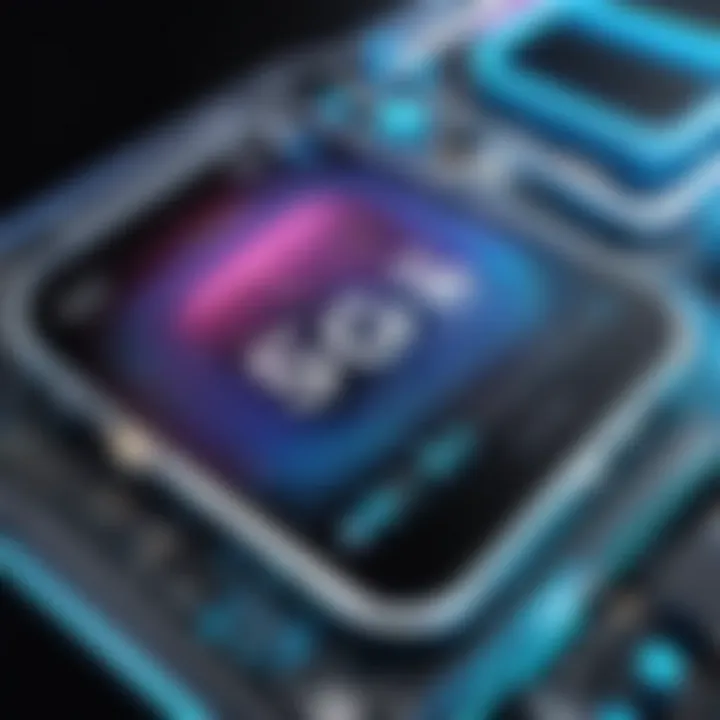
Intro
The advent of 5G technology is reshaping the landscape of mobile connectivity. As new standards in communication emerge, especially with Apple’s introduction of 5G-capable iPhones, understanding these impacts on performance and user experience becomes crucial. This deep dive will explore how 5G enhances iPhone functionalities, what new experiences it unlocks, and what this means for consumers in the digital realm.
5G technology promises significantly faster data speeds, lower latency, and increased connectivity options. As such, this article seeks to unpack these elements, providing insights into technical specifications, the models that support 5G, and the practical applications shaping future usage. With the tech-savvy market constantly evolving, it is essential to remain informed about the implications of these advancements in consumer technology.
Understanding 5G Technology
The advent of 5G technology is a significant milestone in telecommunications. It marks a departure from previous networks by offering enhanced speed, reduced latency, and more reliable connections. Understanding 5G is crucial, particularly for iPhone users, as it directly influences user experience and device performance. This section will break down the definition, comparison with earlier generations, and the innovations that 5G brings.
Definition and Characteristics of 5G
5G, or fifth-generation wireless technology, is defined by its ability to provide faster data rates, improved capacity, and lower latency. In practical terms, 5G is more than just an upgraded version of 4G. It enables the transmission of large amounts of data with minimal delay. The connection can support various devices simultaneously, creating a network that is both flexible and efficient.
Key characteristics of 5G include:
- Speed: 5G can achieve data rates exceeding 10 Gbps. This is a marked improvement over 4G, which typically reaches 1 Gbps.
- Low latency: Latency can drop to as low as 1 ms, making real-time applications smoother.
- Network slicing: This allows the creation of multiple virtual networks within a single physical network, making it adaptable to different needs.
Comparison with Previous Generations
Comparing 5G with its predecessors, it is essential to understand the core differences that impact performance. For instance, while 4G LTE offers good speed and coverage, it struggles with congestion in densely populated areas. 5G addresses this issue with advanced technologies such as beamforming and massive MIMO, which enable better signal quality and maintain high speeds even in crowded environments.
Moreover, 5G is designed to support not only mobile devices but also IoT devices. This sets it apart from 4G, which was mainly focused on smartphones. The versatility of 5G encourages innovation in multiple sectors like transport, healthcare, and smart cities.
Technological Innovations in 5G
5G introduces several technological innovations that elevate mobile connectivity. These innovations are critical for developers and software engineers, influencing how applications are designed and used. Some of the notable advancements include:
- Massive MIMO (Multiple Input Multiple Output): Involves numerous antennas on a base station that improve capacity and coverage.
- Beamforming: Directs signals to specific devices rather than broadcasting in all directions, enhancing efficiency.
- Edge computing: This allows data processing to occur closer to the user, reducing latency and improving response times.
These innovations collectively enhance user experience, allowing for richer applications and smoother performance. The full potential of 5G will become evident as more technologies and applications are developed to take advantage of its capabilities.
"5G isn’t just about speed; it’s about expanding what is possible in technology, from healthcare to gaming."
The impact of these technological advancements is a crucial factor in understanding how 5G significantly alters mobile performance and user experiences.
iPhone Models Supporting 5G
The introduction of 5G technology in smartphones has stirred significant interest among users and industry experts alike. Understanding which iPhone models support 5G is crucial for potential buyers, as it directly influences their connectivity and performance experience. The transition to 5G marks a new age in mobile technology, making it essential for iPhone users to know how these models harness this technology to enhance functionality.
Overview of Compatible Models
Apple made headlines with its launch of the iPhone 12 series in 2020, which was the first to incorporate 5G capabilities. Currently, all models from iPhone 12 onward support 5G, including the iPhone 12, iPhone 12 Mini, iPhone 12 Pro, and iPhone 12 Pro Max. This transition spurred excitement, as users could now experience the benefits of faster data speeds and more reliable connections. The subsequent iPhone 13 and iPhone 14 series further expanded on this, offering additional features alongside 5G support.
Since original 5G support in iPhones began with the 12 lineup, later models like the iPhone SE (3rd Generation) also adopted this connectivity. Consumers now must consider the specific model that aligns with their needs, as higher-tier models generally boast enhanced performance through improved chipsets and additional technological advancements.
Key Specifications of 5G-enabled iPhones

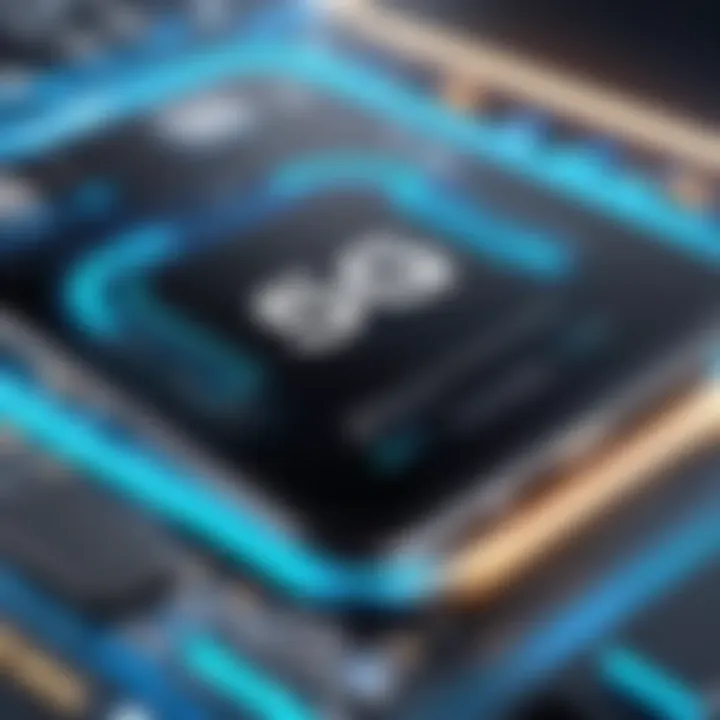
The integration of 5G in iPhones goes beyond mere support. It involves complex specifications that enhance user experience. Most notably, the A14 Bionic chip in the iPhone 12 series made it significantly capable of handling 5G data. Moving to the iPhone 13, the introduction of the A15 Bionic chip further optimized 5G performance, maintaining efficiency and battery life during high data usage.
Key specifications to note include:
- Enhanced Connectivity: 5G iPhones support both sub-6GHz and mmWave frequencies, enabling users to access faster speeds in a broad range of environments.
- Battery Efficiency: Apple's custom chips manage power consumption effectively even when 5G is in use, which is critical for users concerned about battery life.
- Advanced Smart Data Modes: These modes intelligently switch between 4G and 5G, based on users’ current tasks, conserving battery life while ensuring optimal performance.
Future iPhone Models and 5G Integration
Looking ahead, it is clear that 5G will continue to evolve. Apple has a penchant for innovation, and future iPhone models are likely to incorporate further enhancements in 5G technology. Speculations suggest that the next iterations will not only maintain current capabilities but may also introduce features such as improved antenna designs for stronger signals and potentially the support for upcoming 6G technologies.
The focus on augmented reality applications, cloud gaming services, and advanced streaming capabilities relies heavily on 5G. Therefore, future iPhones must adapt to stay ahead in performance and user experience. This anticipation shapes consumer behavior, prompting continuous interest and updates on upcoming models and their 5G capabilities, ensuring the iPhone remains a leader in mobile technology.
Enhancements in Connectivity
In recent years, 5G technology has fundamentally changed how users engage with their mobile devices. This transformation is especially evident in iPhones, where enhancements in connectivity are not just beneficial but essential for a rich user experience. The integration of 5G into iPhones improves several key elements, including data speeds, latency, and coverage. Each of these areas plays a significant role in not only enhancing the performance of these devices but also shaping the overall interaction users have with digital content.
Improved Data Speeds and Efficiency
One of the most touted benefits of 5G technology is its improved data speeds. With 4G LTE, users experienced peak download speeds around 100 Mbps under optimal conditions. In contrast, 5G can theoretically reach speeds of up to 10 Gbps. This dramatic increase means that users can download large files, stream high-definition videos, and engage in bandwidth-intensive tasks almost instantaneously.
The efficiency of data communication is also noteworthy. With 5G, data packets are transmitted more efficiently, resulting in reduced congestion. This becomes crucial during peak usage times, where network slowdowns are common. iPhone users can thus expect consistent performance even in crowded places, where traditional networks may falter.
Low Latency Experiences
Latency refers to the time it takes for data to travel from the source to the destination and back. With 5G, the latency is significantly reduced to as low as 1 millisecond. This improvement is game-changing for applications requiring real-time interaction, such as online gaming, virtual reality, and augmented reality.
The low latency experience enables iPhone users to respond to actions almost instantaneously. For example, in gaming, this can mean the difference between winning and losing by a split second. Similarly, in augmented reality applications, immediate feedback enhances immersion and functionality, allowing for a seamless experience.
Extended Coverage Areas
The reach of 5G technology also represents a major enhancement in connectivity. 5G networks are being designed to provide broader coverage compared to their predecessors. This is particularly important as mobile users increasingly rely on devices outside urban areas where signal strength is typically weaker.
The transition from macro cell towers to a denser network of small cells ensures that iPhones can maintain strong connections even in less populated areas. This extended coverage leads to fewer dropped calls, more reliable streaming, and overall a smoother user experience. As 5G technologies continue to expand, it is expected that more users across diverse geographies will benefit from these improvements in connectivity.
"The leap from 4G to 5G is not merely evolutionary; it is revolutionary, impacting everything from simple browsing to complex interactions in connected environments."
In summary, the enhancements in connectivity brought by 5G technology make a strong case for the importance of this advancement in iPhone performance. Improved data speeds and efficiency, low latency experiences, and extended coverage areas together create a more cohesive and enjoyable user experience.
Practical Applications of 5G on iPhones
The advent of 5G technology brings various practical applications for iPhone users. Understanding these applications is crucial for grasping how 5G will change individual experiences and the overall utility of the device. Benefits such as faster connectivity, improved reliability, and enhanced functions provide iPhone users with new ways to engage with their devices. Moreover, it opens the door to exciting features that leverage this advanced technology.
Enhanced Streaming Capabilities
5G technology allows for significantly better streaming experiences on iPhones. With data speeds nearing 10 Gbps in optimal conditions, users can stream high-definition content seamlessly. This is particularly valuable for consumers who prefer on-the-go entertainment through platforms like Netflix or YouTube. Users no longer have to worry about buffering or lag, as 5G can support multiple high-bandwidth activities simultaneously. Furthermore, this technology enables users to watch ultra-high definition videos without compromising the quality. The improved throughput enhances overall enjoyment and satisfaction.
Augmented Reality and Gaming Performance
The integration of 5G technology enhances augmented reality (AR) apps and gaming experiences on iPhones. Low latency and faster response times create a more immersive experience for users. For example, games can load faster, and the interactive elements can respond in real-time, making gaming on the iPhone more enjoyable. Apple’s ARKit can leverage 5G to create real-time interactions in AR applications, such as interactive maps or educational tools. This adds a layer of practical usage, transforming not just entertainment, but also how information is consumed and shared.
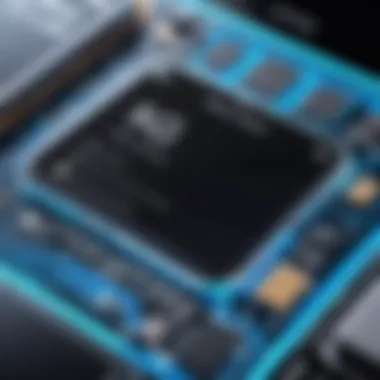
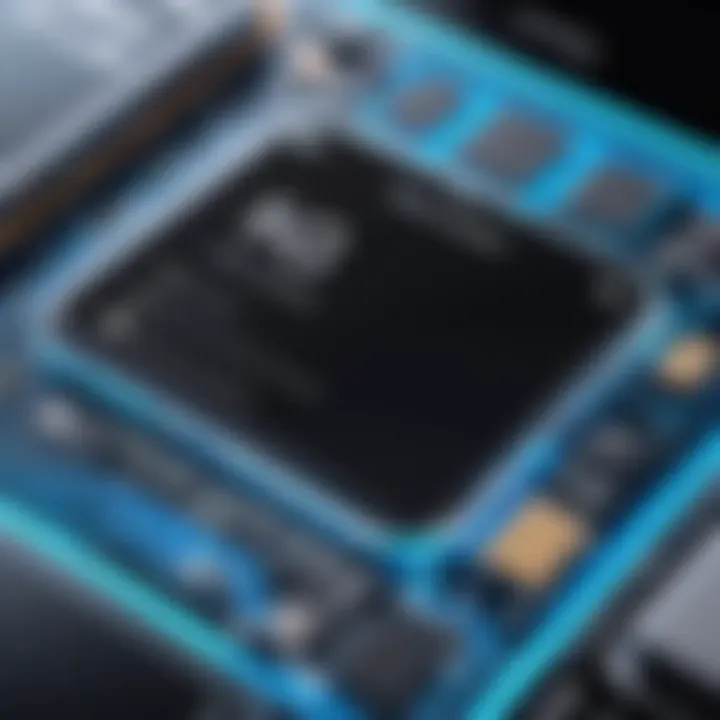
Remote Work and Collaboration Tools
As remote work continues to be prevalent, 5G presents a strong opportunity for enhancing collaboration tools on iPhones. Applications like Zoom, Microsoft Teams, and Slack can benefit immensely from 5G's low latency and high bandwidth, offering smoother video calls and faster file sharing. This means fewer interruptions during critical meetings and quicker access to documents. Users can also expect better connectivity in crowded environments, making it easier to work from cafes, co-working spaces, or whilst traveling. Overall, 5G facilitates a more effective remote work experience, allowing for increased productivity and engagement.
This landscape of practical applications reveals that 5G technology is more than a buzzword; it is transforming the day-to-day experiences of iPhone users.
Emphasizing these developments provides a clearer perspective on how 5G enriches functionality. It allows for enhanced media consumption, gaming, and professional collaboration, marking a significant shift in mobile technology.
Challenges in 5G Implementation on iPhones
The integration of 5G technology into iPhones ushered in a new era of connectivity. However, it is imperative to recognize the challenges that accompany this advancement. Understanding these challenges is crucial for consumers and manufacturers alike. Unpacking issues such as battery life, infrastructure limitations, and security risks provides insight into the complexities facing users today.
Battery Life Concerns
One major challenge that users encounter with 5G-enabled iPhones is battery life. Bringing faster data speeds and connectivity comes at a cost. The enhanced functionality of 5G networks demands more power. Users may notice a quicker drain on their iPhones' batteries during extensive use.
- 5G vs 4G Battery Drain: Studies suggest that 5G usage can lead to a significant increase in power consumption compared to 4G. For instance, heavy tasks like streaming or gaming can intensify this issue.
- Mode Switching: When 5G connectivity fluctuates, iPhones often switch back to 4G, which may further exhaust the battery due to constant adjustments. Therefore, managing battery consumption becomes crucial for regular use.
To mitigate these concerns, Apple and other manufacturers are investing in better battery technology. Innovations like larger battery capacities and advanced power management systems aim to counterbalance the surging energy demands of 5G.
Infrastructure Limitations
Another pivotal challenge in leveraging 5G technology on iPhones is the infrastructure limitations. While 5G networks promise high speeds, their rollout is not uniform across regions. The reality is that users may experience varying quality and availability of 5G connections, depending on their geographic location.
- Coverage Gaps: Many areas still lack adequate 5G infrastructure, leading to frustrations for users who expect seamless connectivity. Rural areas, in particular, often struggle more than urban centers.
- Transition from 4G to 5G: As the infrastructure transitions from 4G LTE to 5G, users may experience periods of instability and slower speeds, which can be inconvenient for everyday tasks. This shift raises questions about how soon consumers can expect comprehensive coverage.
Addressing these infrastructure issues is ongoing. It requires collaboration between telecommunications providers and government entities to promote widespread access and ensure optimal service.
Security Risks Associated with 5G
With the rapid advancement of 5G technology, security is a subject of paramount importance. While 5G offers enhanced connectivity, it also introduces new security risks that users must consider.
- Increased Vulnerabilities: The complexity of 5G networks creates a larger attack surface for potential cyber threats. More devices connected simultaneously could mean more entry points for hackers.
- Privacy Concerns: As iPhones leverage 5G technology, the amount of data transmitted increases. This raises concerns about user privacy and the potential for data breaches.
It is essential for users to stay informed and practice safe habits when using their devices. Regular software updates, strong passwords, and recognizing the signs of potential threats are measures that can help safeguard information.
The emergence of 5G technology brings both opportunities and challenges. Addressing these hurdles will determine how effectively users can harness the benefits of high-speed connectivity.
In summary, while 5G technology enhances user experience on iPhones, it is not without its difficulties. From battery life concerns and infrastructure disparities to security risks, understanding these challenges is key to maximizing the benefits of this technology.
User Perception and Feedback
User perception and feedback play a crucial role in the impact of 5G technology on iPhone performance and the overall user experience. The success of any technological advancement often relies on how consumers view and interact with it. Therefore, understanding the perception of 5G features among iPhone users can provide valuable insights into its integration and effectiveness.
Key Elements of User Perception
Several factors influence user perception of 5G. First, consumer awareness of the technology significantly affects how it is adopted and used. Users need to understand what 5G can offer to realize its full potential. Plus, comparative experiences across different users also shape their opinions – those who feel a noticeable difference in their device's performance may advocate for broader 5G adoption.
Second, feedback from users can highlight both the advantages and limitations associated with 5G. Considerations such as battery life, network reliability, and real-world speeds provide insights into how well 5G meets user needs in daily life. Understanding feedback allows manufacturers such as Apple to refine their devices to enhance user satisfaction and address concerns.

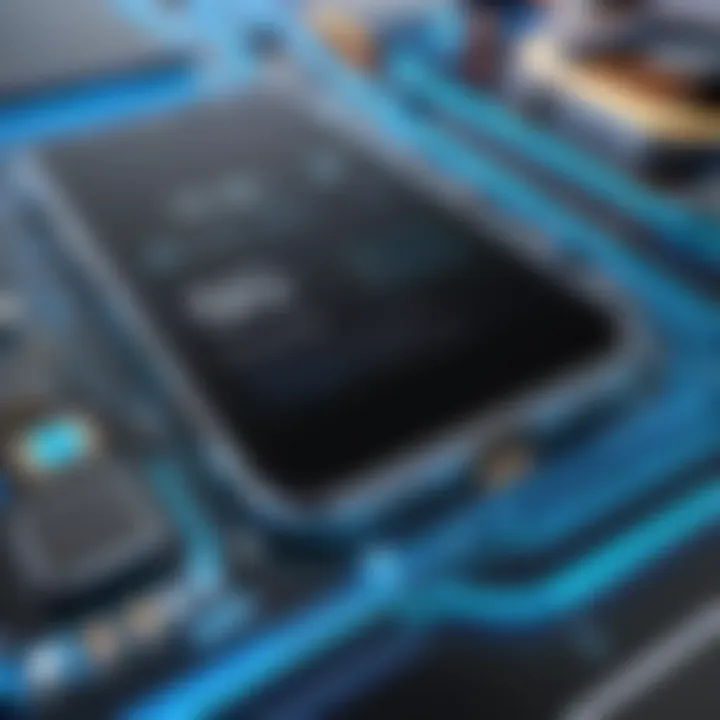
Consumer Awareness of 5G Features
The level of consumer awareness regarding 5G features is rather varied. Many users are aware that 5G provides faster download and upload speeds, but fewer understand the breadth of its capabilities. For instance, features like enhanced video streaming, low-latency gaming, and advanced cloud connectivity are often underappreciated by the general user base.
Understanding these advanced features is vital. Education can empower users to make informed decisions about their devices and service plans. Apple, through its marketing channels and user guides, needs to convey clear messages about what users can expect, especially in terms of performance improvements in activities that require high-speed connections.
Comparative User Experiences
When examining the comparative user experiences of 5G versus 4G LTE on iPhones, the differences can be stark. Users who have made the transition to 5G often report significant enhancements in activities like streaming high-definition video or playing online games in real-time. These advancements can lead to opinions that push others to consider upgrading their devices to access better connectivity.
The feedback often identifies moments when performance declines due to network congestion or infrastructure limitations. Such experiences remind us that not all 5G interactions are perfect and that user satisfaction can hinge on local conditions and service quality.
Adoption Trends Across Different Demographics
Adoption trends in 5G technology vary significantly across different demographics. Younger users, often more tech-savvy, show a higher tendency to embrace 5G. This group typically prioritizes high-speed internet for entertainment and gaming. Conversely, older demographics might take a more cautious approach, favoring proven technologies like 4G for simplicity in everyday tasks like calling and texting.
However, as more content becomes available that takes advantage of 5G’s capabilities, we may observe a shift in these trends. The rise of remote work tools and productivity applications also prospects an increase in adoption among professionals needing reliable and fast networks.
Overall, the relationship between user perception, feedback, and the adoption of 5G technology in iPhones will likely evolve. Tracking these sentiments allows stakeholders to adjust strategies effectively and meet user expectations.
The Future of 5G in Mobile Technology
The future of 5G technology is pivotal not only for iPhones but also for the entire mobile landscape. As we delve into this topic, it’s essential to understand how the developments in 5G can benefit users and reshape connectivity. Network advancements promise fast, efficient communication, creating opportunities for innovations in various sectors such as healthcare, transportation, and entertainment.
Projected Developments in 5G Technology
Projected developments in 5G technology indicate a shift towards increased bandwidth and reduced latency. Prominent improvements include the expansion of 5G network coverage, making it accessible even in rural areas. Moreover, the integration of advanced antenna technologies, like Massive MIMO (Multiple Input Multiple Output), will significantly enhance the network’s capacity.
With the expected roll-out of 5G standalone architecture, users can experience a more robust and stable connection. This can lead to exceptional support for new applications, such as smart cities and IoT devices, ensuring seamless communication and data transfer. By 2025, it is estimated that 5G networks will cover over 40% of the global population, enhancing user experience worldwide.
Potential Impacts on Mobile Ecosystem
5G technology is set to redefine the mobile ecosystem. The higher speeds and capacities will enable developers to create more sophisticated applications. For iPhone users, this means enhanced experiences in areas such as gaming and augmented reality. Users can expect faster downloads and reduced buffering in streaming services.
The mobile ecosystem will also see an increase in partnerships between tech companies and service providers. Such collaborations aim to foster innovation and create user-centric applications and services that leverage 5G capabilities. This dynamic can lead to better hardware optimization and increased value for consumers.
Long-term Outlook for 5G Users
As we look ahead, the long-term outlook for 5G users appears promising. Adopting this technology is likely to facilitate an entirely new range of services and experiences. With continuous advancements, we can expect 5G to support applications that require high data processing and real-time communication.
In an increasingly digital world, users will benefit from the proliferation of 5G-enabled devices beyond iPhones. Smartphones, smart home technology, and wearable devices will converge to create a connected ecosystem. Consequently, understanding and adapting to these changes will be crucial for consumers to fully leverage the benefits of 5G technology.
Ending
Summary of Key Insights
5G technology marks a significant advancement in mobile connectivity, promising superior data speeds, lower latency, and greater reliability compared to previous generations. iPhones, particularly the newer models, leverage this technology to enhance user experiences dramatically. Key insights include:
- Enhanced Performance: With faster internet speeds, tasks such as streaming, gaming, and video calls improve substantially. Users often report smoother experiences in demanding applications.
- Broader Applications: 5G opens new avenues for augmented reality and remote work tools. The technology enables seamless integration into daily activities, benefiting both personal and professional uses.
- User Feedback: Overall consumer awareness of 5G features has increased, although there are varying perceptions on its necessity based on demographics. Some users might not fully utilize 5G capabilities due to limited access or understanding.
Final Thoughts on 5G Integration in iPhones
The integration of 5G within iPhones signals a transformative era in mobile communication. As more users adopt this technology, it is crucial to consider not only performance improvements but also the accompanying challenges, such as battery consumption and infrastructure readiness.
Moving forward, it is likely that 5G will not only change how users interact with their devices, but also influence how developers design applications. The benefits of adopting 5G technology in iPhones position Apple to lead in mobile innovation, potentially reshaping user expectations in the process.



